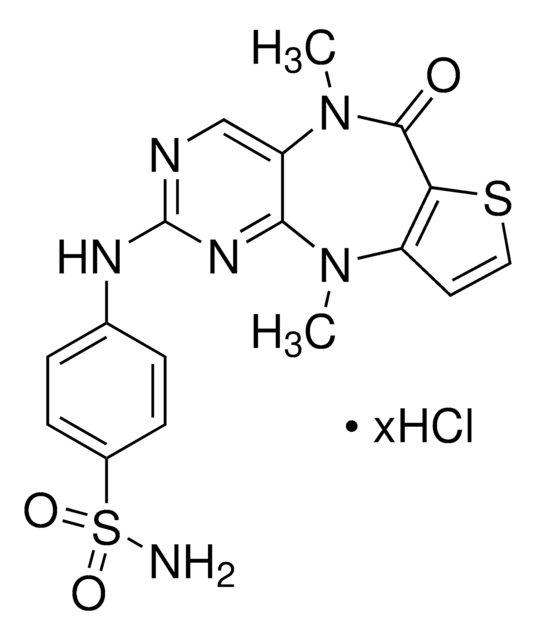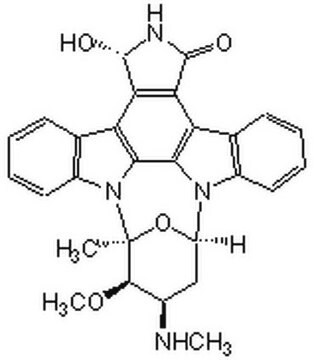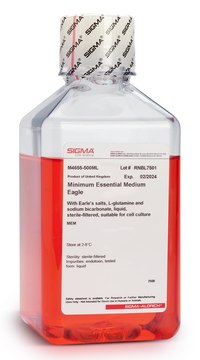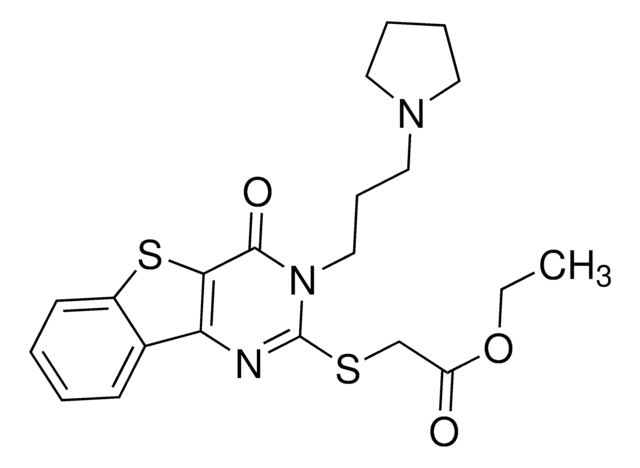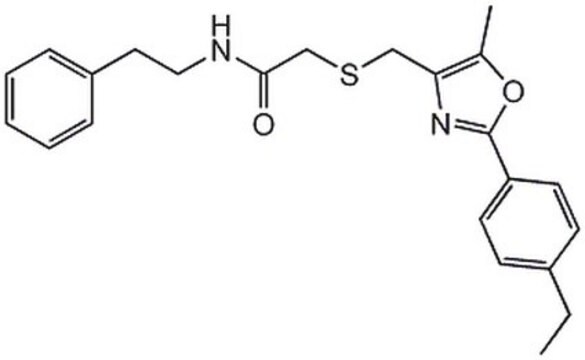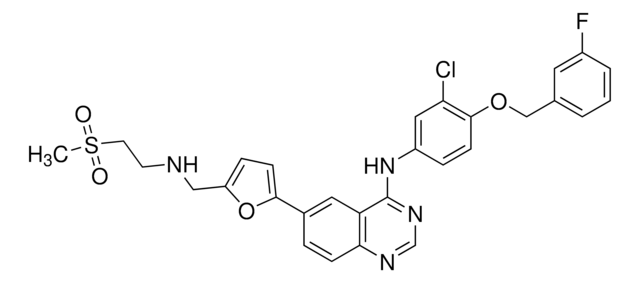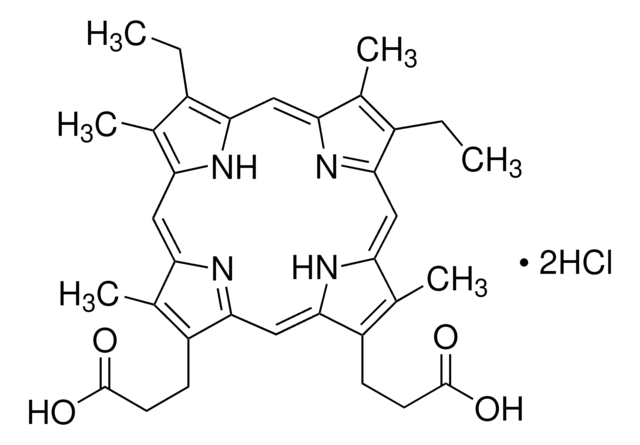Kluczowe dokumenty
SML0534
Verteporfin
≥94% (HPLC), powder, YAP-TEA domain interaction inhibitor
Synonim(y):
(4R,4aS)-rel-18-ethenyl-4,4a-dihydro-3,4-bis(methoxycarbonyl)-4a,8,14,19-tetramethyl-24H,26H-Benzo[b]porphine-9,13-dipropanoic acid monomethyl ester, Visudyne, trans-18-ethenyl-4,4a-dihydro-3,4-bis(methoxycarbonyl)-4a,8,14,19-tetramethyl-23H,25H-Benzo[b]porphine-9,13-dipropanoic acid monomethyl ester
About This Item
Polecane produkty
Nazwa produktu
Verteporfin, ≥94% (HPLC)
Poziom jakości
Próba
≥94% (HPLC)
Formularz
powder
warunki przechowywania
desiccated
protect from light
rozpuszczalność
DMSO: 2 mg/mL, clear (warmed)
temp. przechowywania
−20°C
ciąg SMILES
CC(C(/C=C1[C@@]2(C)C(/C(N/1)=C/3)=CC=C(C(OC)=O)[C@H]2C(OC)=O)=N/4)=C(CCC(OC)=O)C4=C\C5=C(CCC(O)=O)C(C)=C(/C=C6C(C=C)=C(C)C3=N/6)N5.CC(C(/C=C7[C@@]8(C)C(/C(N/7)=C/9)=CC=C(C(OC)=O)[C@H]8C(OC)=O)=N/%10)=C(CCC(O)=O)C%10=C\C%11=C(CCC(OC)=O)C(C)=C(/C=C%12C(C=C)
InChI
1S/2C41H42N4O8/c1-9-23-20(2)29-17-34-27-13-10-26(39(49)52-7)38(40(50)53-8)41(27,5)35(45-34)19-30-22(4)24(11-14-36(46)47)32(44-30)18-33-25(12-15-37(48)51-6)21(3)28(43-33)16-31(23)42-29;1-9-23-20(2)29-17-34-27-13-10-26(39(49)52-7)38(40(50)53-8)41(27,5)35(45-34)19-30-22(4)25(12-15-37(48)51-6)33(44-30)18-32-24(11-14-36(46)47)21(3)28(43-32)16-31(23)42-29/h2*9-10,13,16-19,38,43,45H,1,11-12,14-15H2,2-8H3,(H,46,47)/b31-16-,32-18-,34-17-,35-19-;31-16-,33-18-,34-17-,35-19-/t2*38-,41+/m00/s1
Klucz InChI
YHNBVDZVUQFVLS-SKJZPIBWSA-N
Szukasz podobnych produktów? Odwiedź Przewodnik dotyczący porównywania produktów
Zastosowanie
Działania biochem./fizjol.
Inne uwagi
Kod klasy składowania
11 - Combustible Solids
Klasa zagrożenia wodnego (WGK)
WGK 3
Temperatura zapłonu (°F)
Not applicable
Temperatura zapłonu (°C)
Not applicable
Wybierz jedną z najnowszych wersji:
Masz już ten produkt?
Dokumenty związane z niedawno zakupionymi produktami zostały zamieszczone w Bibliotece dokumentów.
Klienci oglądali również te produkty
Nasz zespół naukowców ma doświadczenie we wszystkich obszarach badań, w tym w naukach przyrodniczych, materiałoznawstwie, syntezie chemicznej, chromatografii, analityce i wielu innych dziedzinach.
Skontaktuj się z zespołem ds. pomocy technicznej